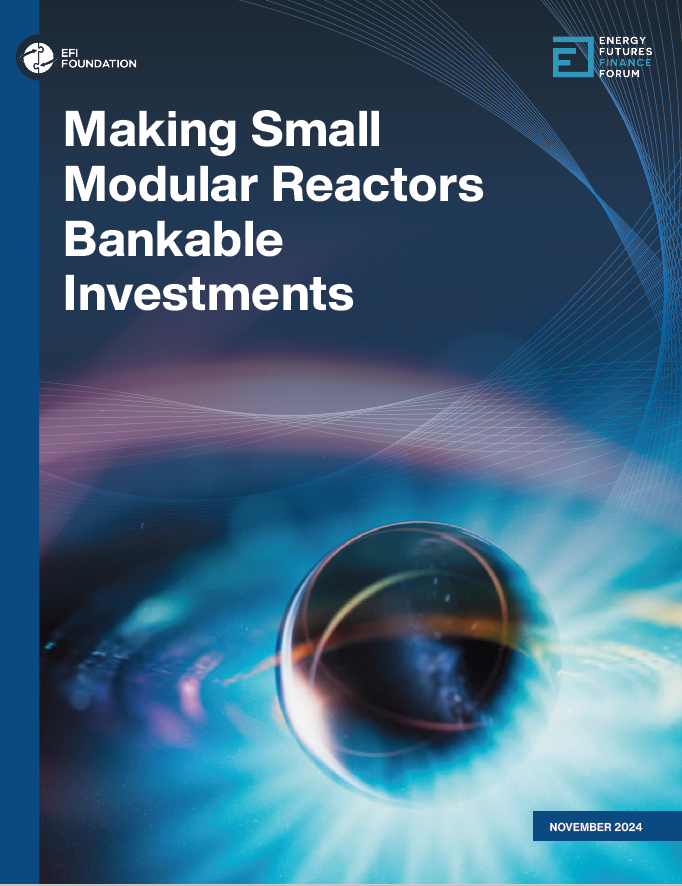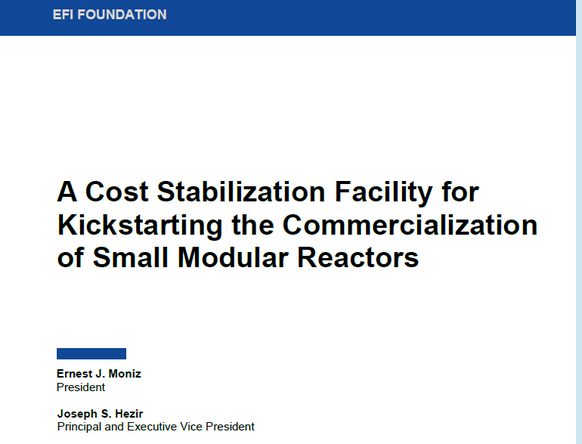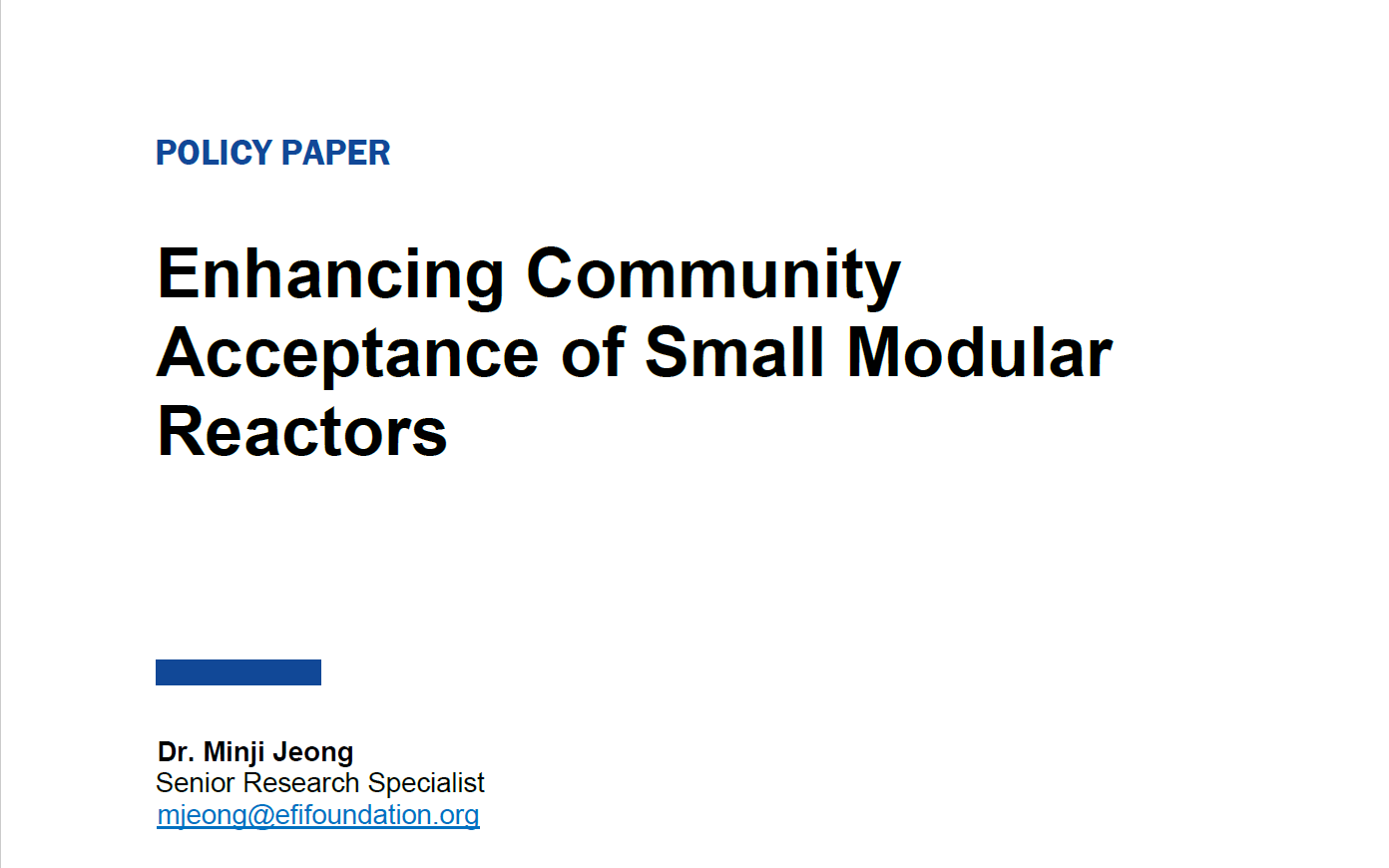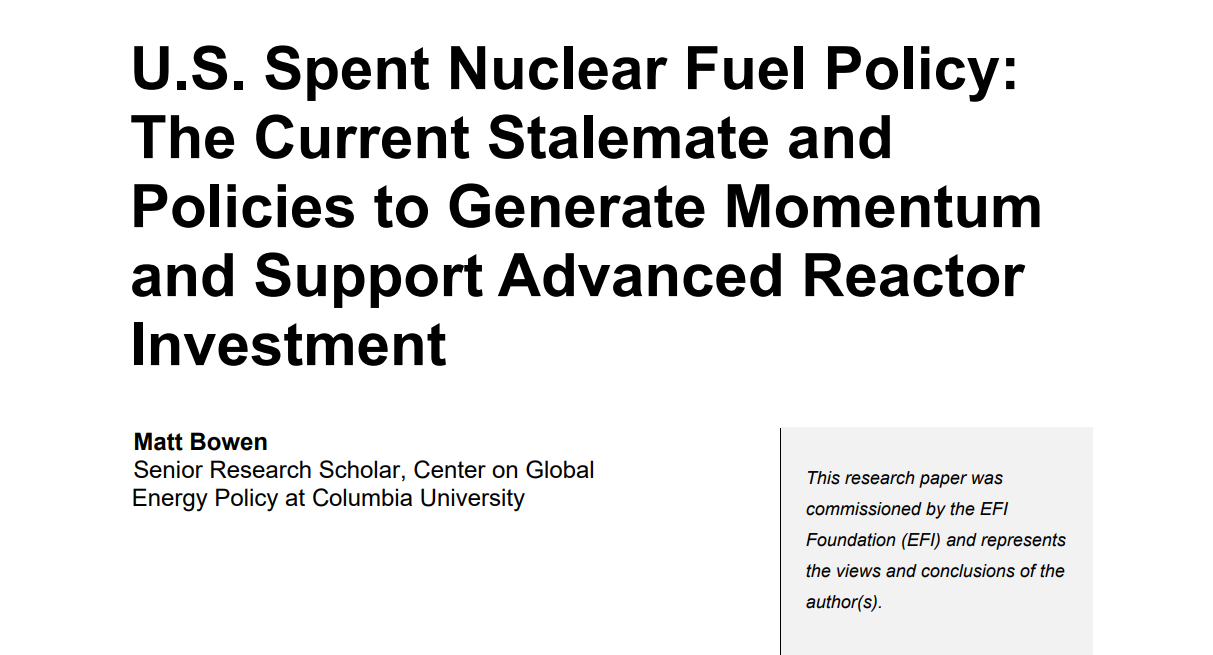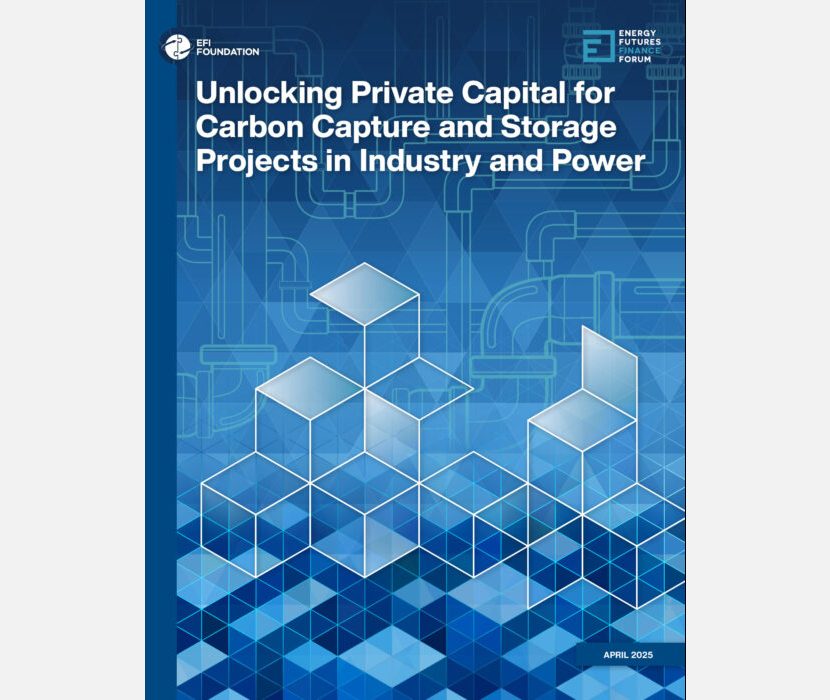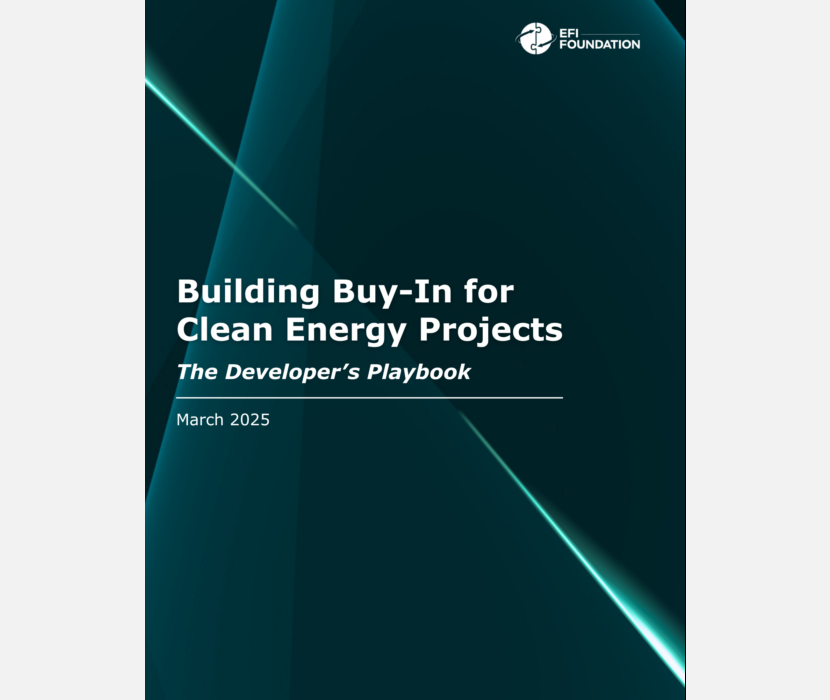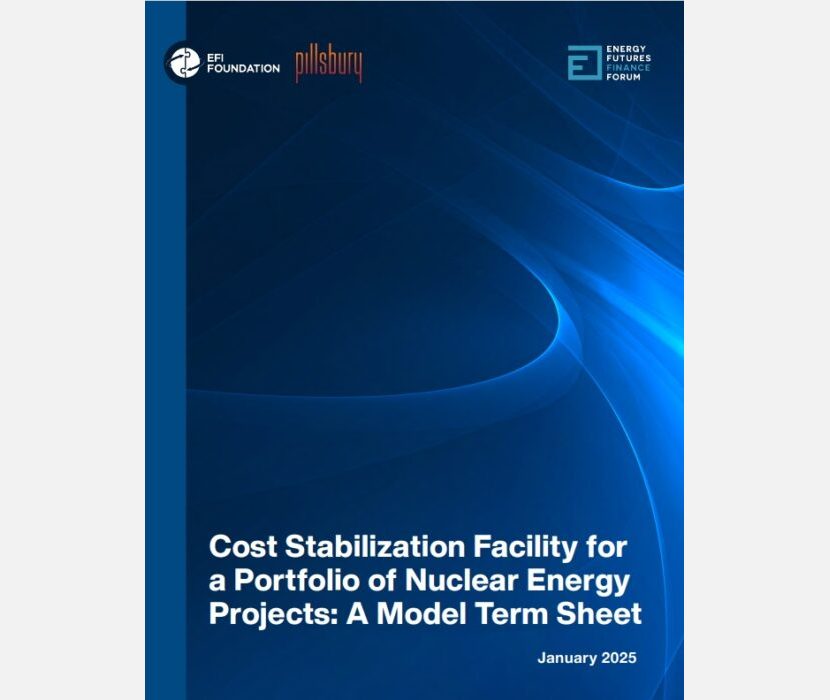Making Small Modular Reactors Bankable Investments (November 2024), from the EFI Foundation’s (EFIF’s) Energy Futures Finance Forum (EF3), provides actionable policy recommendations to address barriers to the formation of investment-grade orderbooks for small modular nuclear reactors (SMRs) in the United States. Unlike bespoke, stick-built, large nuclear reactors, SMRs are—by definition—smaller in size and fabricated largely in factories using modular, standard components. An orderbook is defined as firm commitments for multiple, identical installations of a particular design. While the first-of-a-kind build for any SMR design may be costly, anticipated economies of series should reduce both costs and uncertainties in successive builds. The analysis aims to increase bankability and the likelihood of orderbook formation by motivated strategic investors and affiliated capital providers.
Nuclear reactors produce large quantities of clean, firm power in a relatively compact footprint; are capable of greater-than 95% capacity factor operation; and new and evolutionary reactor designs incorporate notable passive safety features.
SMRs offer distinct advantages that alter the traditional nuclear business model, streamline delivery, and expand the potential applications for nuclear energy. Rather than relying on economies of scale, SMRs use modular, standardized components that can be fabricated in factories. This “market modularity” allows for aggregation of reactor units—built in series or parallel—to establish larger nuclear plants. This can remove redundancies in regulatory approvals and construction while taking advantage of more durable demand signals.
Repeat builds using standardized components, similar to solar panels and battery modules, can drive down costs, making SMRs a bankable, cost-competitive solution. For this to happen, the focus must shift from single plants to orderbooks.
Several challenges must be addressed to enhance the bankability of SMRs, including the following:
- Orderbook cost magnitude coupled with cost uncertainty
- Uncertainty surrounding licensing by the U.S. Nuclear Regulatory Commission (NRC)
- An inadequate or nonexistent fuel supply chain
- The lack of a clear national pathway for spent fuel
- Difficulty in achieving community-level social acceptance.
Despite policy support for research and development, commercial SMR deployment is making slow progress, with private capital largely remaining on the sidelines. SMRs are currently not seen as bankable investments due to a lack of a clear demand signal and the necessary project sponsors to commercialize these reactors.
Substantial private sector capital will be required over a long period to fund SMR construction, fuel supply chains, and workforce development. These capital providers will consider the orderbook, along with the interconnected upstream and downstream supply chain and customer base. They will use a broad set of criteria to determine the extent to which an investment strikes the right risk/reward balance. Central to this process is the identification of risks that exist along the entire value chain of an opportunity. If any one of these risks, wherever located in the value chain, is deemed too great given the expected returns, then the opportunity is rejected.
The SMR industry—including both private and public stakeholders—must work to address a series of investment risks to make orderbooks of reactors bankable. The actionable policy recommendations to enhance bankability (summarized briefly below) address the following five barriers to SMR orderbook formation:
- Orderbook cost magnitude and cost uncertainty. Given that there is little real-world validation of cost estimates, lenders and equity investors are wary of the economic viability of SMRs. The specter of these uncapped, unplanned costs is a first-order barrier to the formation of SMR orderbooks.
- Recommendation: The Loan Programs Office at the U.S. Department of Energy (DOE) could offer a cost stabilization facility via a special credit mechanism to provide liquidity if an orderbook faces unplanned costs.
- Nuclear Regulatory Commission (NRC) licensing uncertainty. While progress has been made, applicants face challenges navigating licensing processes originally meant for larger reactors, leading to lengthy and costly interactions with the NRC. Without the appropriate regulatory framework, developers may have to compromise on design, which affects modularity, standardization, and cost reductions.
- Recommendation: Congress could exempt first-of-a-kind SMR pre-application and licensing activities from the mandatory fee base and offset the cost to the NRC; in the long term, NRC could consider fixed application fees for licensing activities. To assist in the development of regulatory frameworks for modular designs, DOE and the NRC should consider creation of a working group that is focused on SMR manufacturing.
- Inadequate, and in some cases nonexistent, fuel supply chain. A reliable, secure nuclear fuel supply chain ensures on-time deployments of nuclear reactors and uninterrupted operations over several decades. However, the present global uranium enrichment supply chain creates critical project risks. The 2024 ban on Russian low-enriched uranium, which completely bans Russian enrichment services starting in 2028, may threaten the low-enriched uranium supply for the operating fleet and LWR-SMR deployments. Non-light water SMRs that use High-Assay Low Enriched Uranium (HALEU) do not presently have a commercial scale supplier outside Russia and China. New HALEU facilities are capital intensive, however, and suppliers lack strong demand signal to create investments. Lastly, national security requirements starting in the next decade also require a domestic enrichment supplier, using domestic enrichment technology; this facility does not exist on a commercial scale. Taken together, there is now even greater emphasis on bolstering the domestic fuel supply chain to ensure energy security.
- Recommendation: Congress should mandate that all new nuclear fuel supply contracts post-2028 include a portion of fuel eligible for national security purposes, with additional appropriations covering any associated premiums. DOE’s Office of Nuclear Energy should consider a contract-for-difference option for both LEU and HALEU appropriations, paired with a domestic supply mandate, to better leverage limited federal dollars and encourage further private investment.
- Lack of a clear national pathway for spent fuel. As clean energy and energy security ambitions converge with increasing electricity demand, support for nuclear energy facilities now outweighs opposition. However, management of spent nuclear fuel remains a concern for the public and other stakeholders, adding uncertainty for SMR developers and investors.
- Recommendation: Congress could amend the Nuclear Waste Policy Act to allow consolidated interim storage before permanent geological disposal, establish dedicated escrow or trust accounts for new SMR developments to set aside funds for spent nuclear fuel disposal, create a specialized spent nuclear fuel management office either within DOE or within a quasi-government spent nuclear fuel management corporation to streamline operations and ensure continuity across administrations, and explore regional approaches to consolidate interim storage and expand research on spent nuclear fuel.
- Community-level social license to operate. Capital providers, such as commercial lenders and private equity firms, are unlikely to invest in new nuclear projects if communities have a negative view of SMRs. Understanding specific communities’ perceptions of hosting SMR facilities, rather than generalized public opinions, is crucial for bankability.
- Recommendation: To scale nuclear energy significantly, host communities and the broader public must be well-informed and actively engaged. The Secretary of Energy should create a new office within the department focused on gathering, producing, and conveying accessible, accurate, and reliable information to the public. This office can likely be established without an act of Congress. It would be adequately staffed to engage with energy communities, existing nuclear communities, and those interested in hosting new nuclear facilities.
Progress must be made to increase the likelihood of orderbook formation; this report provides a set of policy actions that may accelerate progress.
Supplemental Material
(Share this post with others.)


